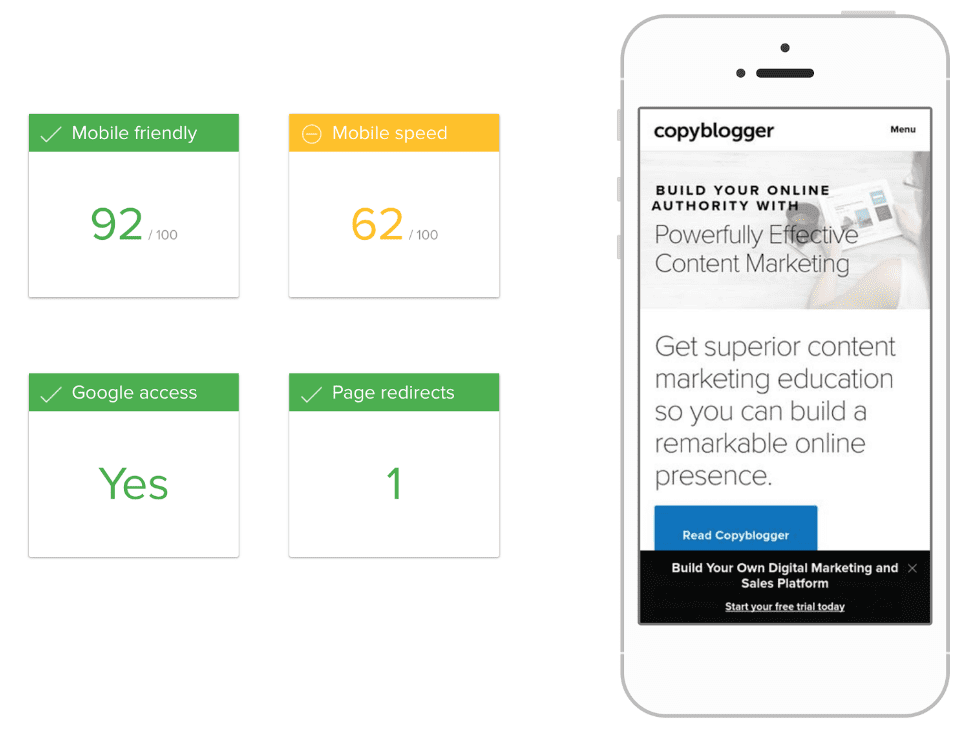[bctt tweet=”Every business needs an SEO strategy, why not share with changing how your website looks” via=”no”]
Every business that will grow beyond the street corner needs an SEO strategy; a way for it to get found online.
Why? Because online is where 67% of Nigerian buyers start their purchase journey [PDF]. So, your SEO and profitability are not only equally important, they also go hand in hand.
What is SEO again? Why do you need it? If you can’t answer these questions, eead Uche Offokoja’s SEO primer; “Is your business ready for SEO?” to get a quick refresher.
__
It’s impossible to cover the nuances of SEO in a 1000-word article. If we are being honest, 10,000 words, and we’d only be halfway there. What you’ll read in this article are fundamental aspects of your website you can improve to start ranking on Google, getting seen by your consumers and making more sales.
Start with a website audit
The first step to creating an SEO strategy is your website audit. Doing this lets you know the specific elements of your website to improve. A professional SEO service will provide a more in-depth outlook for your website complete with SEO competitive analysis, wireframe recommendations plus a search audit.
But a great way to do this on a shoestring budget is to use the SEMRush tool. It’s a free tool that will give you an interactive snapshot of your current SEO efforts; your top organic keywords and their positions, what other sites are competing for your position, backlinks and more.
A basic audit of one of my favourite websites; Copyblogger.com, returned this:
 (All traffic to copyblogger is organic and the leading keyword is “how to write an article.” The data points are interactive and you can dig further down to extract more insights).
(All traffic to copyblogger is organic and the leading keyword is “how to write an article.” The data points are interactive and you can dig further down to extract more insights).
These insights are useful for your content strategy (more on this later) and possible website upgrades to improve usability.
Optimize your site for mobile
As an extension of your website audit, examine how you are doing on mobile. Google ranks mobile-optimized websites higher in SERPs (search engine results pages). But more important is the implication of this on your visitors. More than 55% of all searches now come from mobile, and if your consumers can’t use your site on mobile, they won’t stick around. To get a good sense of how your website does on mobile, use Varvy.
 (Copyblogger.com is optimized for mobile, although the site latency on mobile needs to be optimized.)
(Copyblogger.com is optimized for mobile, although the site latency on mobile needs to be optimized.)
The relationship between brands and customers is not an equal one. Customers have the leverage and you have to be there for them as they navigate their social and transactional realities. To do that is to be available on their mobile phones where they spend a third of their waking lives.
I’ll leave Tom Fisbourne of Marketoon to drive the point home; “A well-loved brand that isn’t optimized for mobile may not be well-loved for long.” Speak to your developer about responsive website design to improve your mobile-optimization.
Tweet: When last did you do a website audit? Never? Find out why you need one here
Develop a content strategy
The number of visitors to your page and how long they stay (their dwell time) also affect your ranking. Useful content with high production values is one of the most effective ways to attract and keep traffic on your website. A content strategy doesn’t mean you start a podcast, a webinar and an email autoresponder series at the same time.
Start with blogging…
Companies with blogs have 97% more inbound links (Source)
B2B marketers using blogs generate 67% more leads (Source)
Small business with blogs generate 126% more leads (Source)
Start your content strategy with keyword research. This helps you figure out real questions and ideas that matter to your consumers. The Google Keyword Planner or the SEMRush tool will come in handy here.
Some general ideas for your content strategy:
– Develop content for humans and make your content helpful.
– Your content strategy should include your content matrix, content calendar and an operational calendar.
– Annotate your content with header tags, add outbound links, make your content readable (avoid walls of text), use alt texts for your images, and compress image sizes to reduce latency.
– Finally, distribute your content. Suss out a robust distribution strategy that will ensure your content reaches your desired audience. You could, for instance, start sending weekly email to your list or create a social sharing strategy.
Are you using popups?
Pop-ups: online forms that keep you away from your heart’s desires.
Only a few people are a fan. That’s why Google is cracking down on websites that have pop-ups. Such websites rank lower in search engine results pages.
Speak with your developer to remove any pop-ups on your website and explore alternative lead-generation elements, including stationary banner ads, stationary sidebar ads, behavior-driven pop-ups or notification style ads. The idea is not to get rid of lead-generation, but to present decent usability.
Improve your site architecture
Finally, how easy is it to navigate your website? When visitors can’t find what they want on your website, they often leave right away; leading to high bounce rate, leading to low ranking on Google. As a general rule; your website should not take more than four clicks to get to the deepest level. LIke this:

The fact is; site architecture is not only great for usability, it makes it easier for search engine bots to crawl and index your website.
While SEO is not the goal in itself (sales and profitability are), you’ll often need SEO to get you there. The ideas here will get you right on your way.
—
This article was written by Gbenga Onalaja. Gbenga is a Content Strategist at Wild Fusion, Wild Fusion is Africa’s leading Digital Marketing Agency.
